- About Us
- Our Work
- Tree Info
- Get Involved
- Blog
- Support Us
By Canopy Team on January 2, 2017
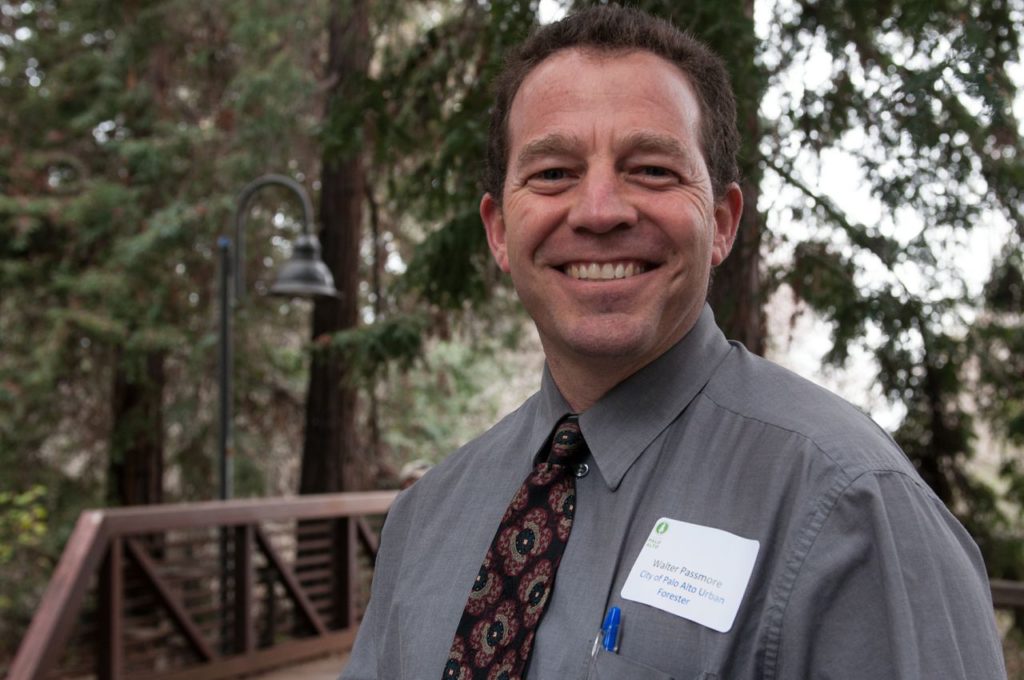
Canopy is grateful to the Society of Municipal Arborists and the editors of City Trees for use of the interview in this post.
If you live in Palo Alto, you may not know Walter Passmore, but you have certainly seen his handiwork. Look around any street or neighborhood in town and you’ll surely notice the leafy asset that Walter thinks about day-in and day-out: Palo Alto’s trees.
Walter is Palo Alto’s Urban Forester. He joined the City in 2012, and has worked hard to ensure his department employs best practices, responds to community needs, and stays up-to-date on innovations in the field. As a result, he’s built one of the most professional and effective urban forestry programs in the nation.
This month, Walter and his dedicated team will be recognized for their achievement by the Society of Municipal Arborists (SMA), after becoming one of only 15 municipal programs in the United States accredited by the SMA.
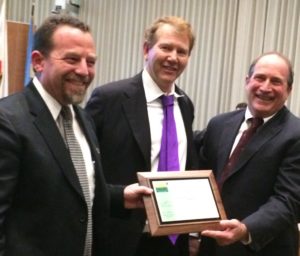
Update 1/9/17: Walter Passmore and Palo Alto mayor Greg Scharff are presented with a plaque in honor of the city’s SMA accreditation
The following interview with Walter was originally conducted and published by SMA in City Trees. This excerpt has been re-published, along with photos and captions, thanks to the generous permission of City Trees editors.
WALTER PASSMORE: I received a bachelor’s degree in natural resources management from California Polytechnic State University and then a master of public administration from California State University at Dominguez Hills.
My professional career started with the US Forest Service, first on the Sierra National Forest and then with the Southern Forest Experiment Station – Forest Inventory and Analysis.
I next worked for the Mississippi Forestry Commission, progressing to a senior administrative role which included coordinating the state’s urban forestry program.
I then transitioned to municipal government as the first city forester for Dallas, Texas. Following Dallas, I served as the urban forester for Austin, Texas. At present I am the urban forester for the City of Palo Alto, California.
WP: Palo Alto has a canopy disparity (about 22% difference) between neighborhoods in the north as compared to the south part of town. The challenge is to motivate private property owners to plant and care for more trees in order to provide greater equity.
This challenge…is significant, but can be viewed as an opportunity to educate residents about the unique asset of the urban forest. Palo Alto’s overall tree canopy, exceeding 37%, is double many nearby communities, which correlates to important quality of life measures.
Continued success of the urban forestry program as well as the urban forest itself will rely on diverse cultures and generations embracing the interdependent relationship between trees and people.
WP: Palo Alto has a comprehensive administrative structure…all urban forestry staff are coordinated across departments and supervised by the urban forester.
This optimizes the experienced and professional staff in each responsibility and builds flexibility to dedicate time where it is most needed…Staff also coordinate with departments such as fire, police, emergency services, sustainability, and the city attorney.
The greatest basis of success is the advocacy and partnership from champions such as those who formed and support the nonprofit group Canopy.
Continued success of the urban forestry program as well as the urban forest itself will rely on diverse cultures and generations embracing the interdependent relationship between trees and people.
For the most part, residents understand that their values need to be preserved, and a good balance has been achieved in three areas:
Because the community truly cares about tree canopy, it voluntarily accepts the fairly administered tree regulations to preserve neighborhood or property character.
Palo Alto Urban Forestry is recognized as important with municipal government and constituents, investments are substantial, and thus Palo Alto is an aspirational model for many communities in California.
WP: Native oaks are probably the most ecologically important species and produce substantial benefits. Valley oak (Quercus lobata) is the apex species in the oak savannah ecosystem that traditionally dominates Palo Alto.
Performance is a subjective term because a species like valley oak does require a large growing space, is intolerant of shade, and it is susceptible to damage from frequent landscape irrigation. The tree ordinance protects valley oak and coast live oak (Q. agrifolia) greater than 11.5 inches diameter and coast redwood (Sequoia sempervirens) greater than 18 inches diameter.
The City was named after a coast redwood that grows along the bank of San Francisquito Creek. El Palo Alto has been a visible and unique monument under which people have congregated for more than 1,000 years.
While El Palo Alto is irreplaceable, redwoods in general were not as numerous throughout the ecological history of the area; those planted in the last hundred years often conflict with homes and infrastructure due to their large size and extensive shallow roots.
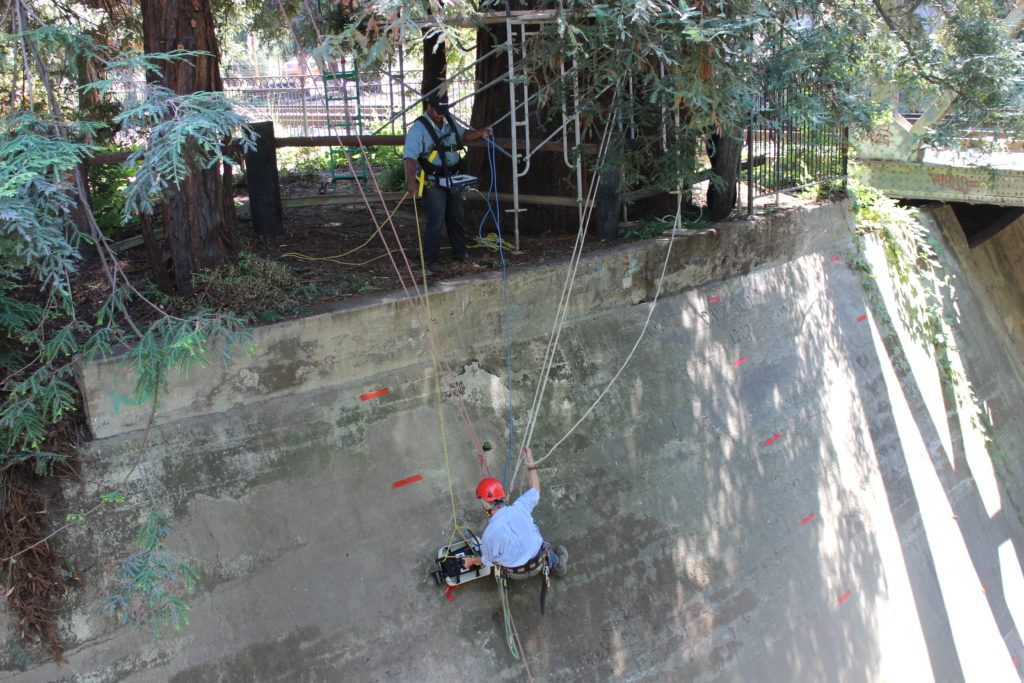
Arborist Robert Booty conducted root mapping of the El Palo Alto Redwood using ground penetrating radar, an innovative non-invasive technology for assessment of tree roots and internal wood. Photo Courtesy Robert Booty.
Understanding that there are no perfect trees, the City strives to plant an increasingly diverse palette with an emphasis on native and drought-tolerant species. At present only one species exceeds 10% of the street tree population—southern magnolia (Magnolia grandiflora) at 11%.
WP: Palo Alto prides itself on being an innovation leader. Currently, we are implementing programs of the Palo Alto Urban Forest Master Plan to enhance technological capabilities that include adding new inventory and analysis tools for improving utility line easement data, and collecting open space and private property data through a crowd-sourced platform. GIS will act as a hub to link multiple data sets as part of a centralized infrastructure management system.
Managing impacts from development is a major focus for which the popular Palo Alto Tree Technical Manual will be revised and augmented with a landscape technical manual.
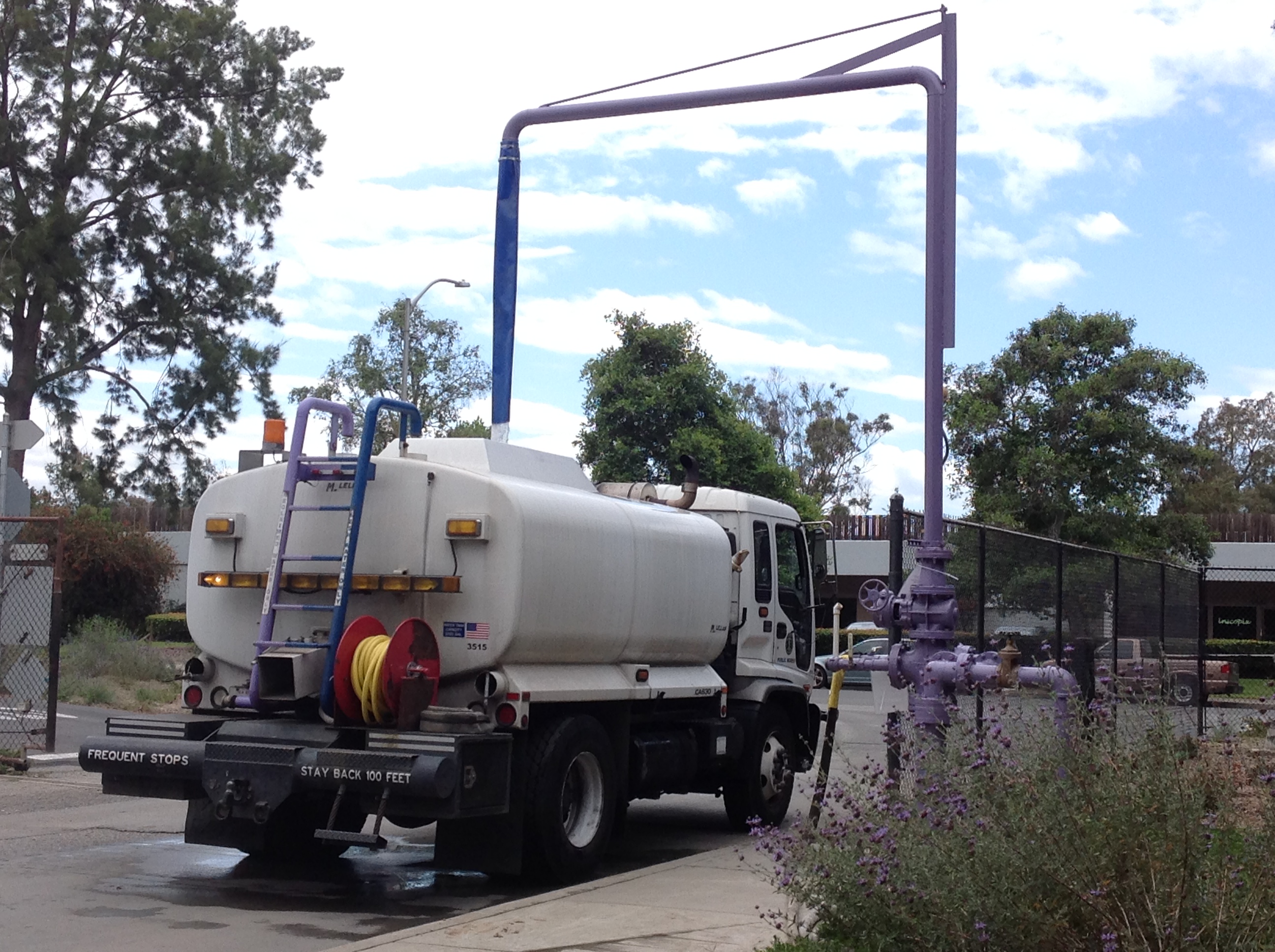
In Palo Alto, recycled water has been used to counter drought effects while saving more than 125,000 gallons of potable water. Recycled water paired with more than 250,000 gallons of deployed groundwater discharge accounts for 60% of all public tree watering.
Practices are piloted or expanded as justified. Green infrastructure is becoming more prominent, with urban forestry playing an important role. Solutions have been proposed and implemented for identified conflicts between trees and sidewalks, and stormwater management.
Commonly installed practices include structural soil, soil corridors with structural cells, root channels, curb cuts, infiltration zones, and permeable surfaces.
Sustainability is likewise driving change through practices such as landscape strip expansion for traffic calming or road diet goals. The City’s Sustainability/Climate Action Plan is analyzing future programs to influence private property owners to adopt environmental stewardship behaviors.
WP: Palo Alto is a relatively small city with a population of about 67,000 residents; however, staff members are specialized to accomplish operations spanning multiple departments and contracts.
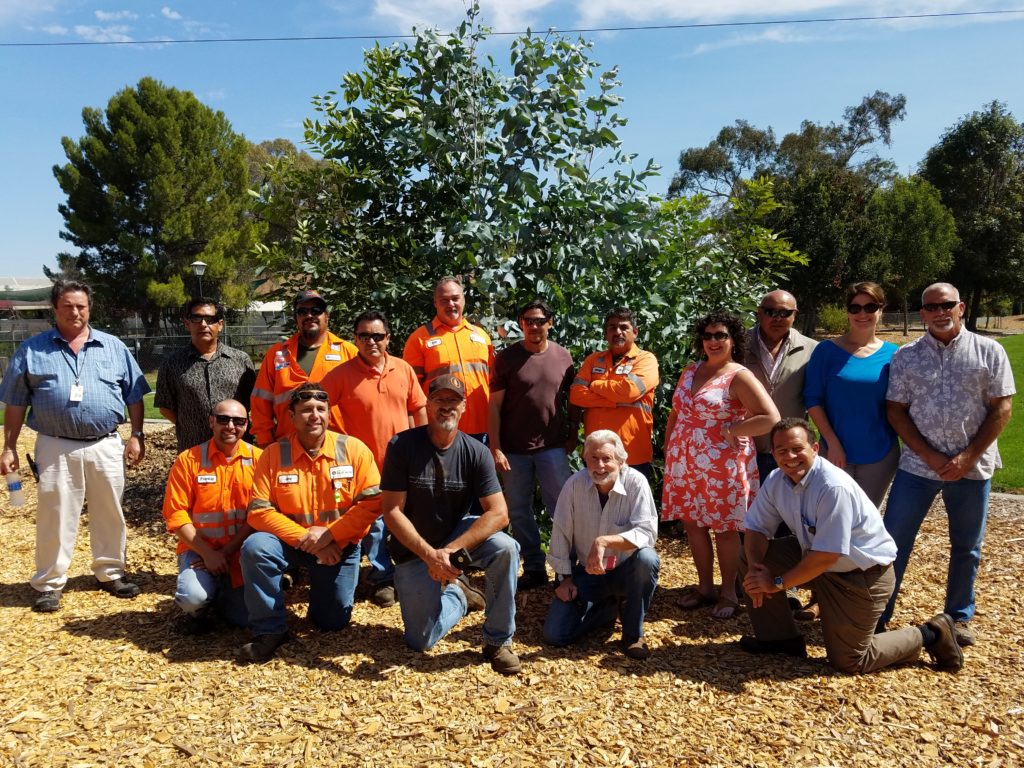
The urban forestry staff
Ten of fourteen staff members are ISA Certified Arborists. Each staff member has specialized skills to complete their particular responsibilities such as utility line clearance, development review, contract administration, or inspection. Staff maintains skills and qualifications that are equal or better than those of contractors.
Palo Alto has an exemplary urban forestry program because of the people who live, work, and play here.
WP: The City partners with Canopy and other non-profit organizations to provide outreach and education, volunteer opportunities, and meaningful events. Stakeholder groups are typically involved in policy or plan development. Stanford University collaborates on activities such as training, research, and environmental education.
WP: Palo Alto has an exemplary urban forestry program because of the people who live, work, and play here. The culture of caring about trees is deeply ingrained so that individual differences are often less prominent than the shared environmental stewardship value. This foundation of a shared natural heritage can be replicated in other communities.

Thanks again to SMA and City Trees for the great interview, and to Walter Passmore for sustaining Palo Alto’s urban forest!